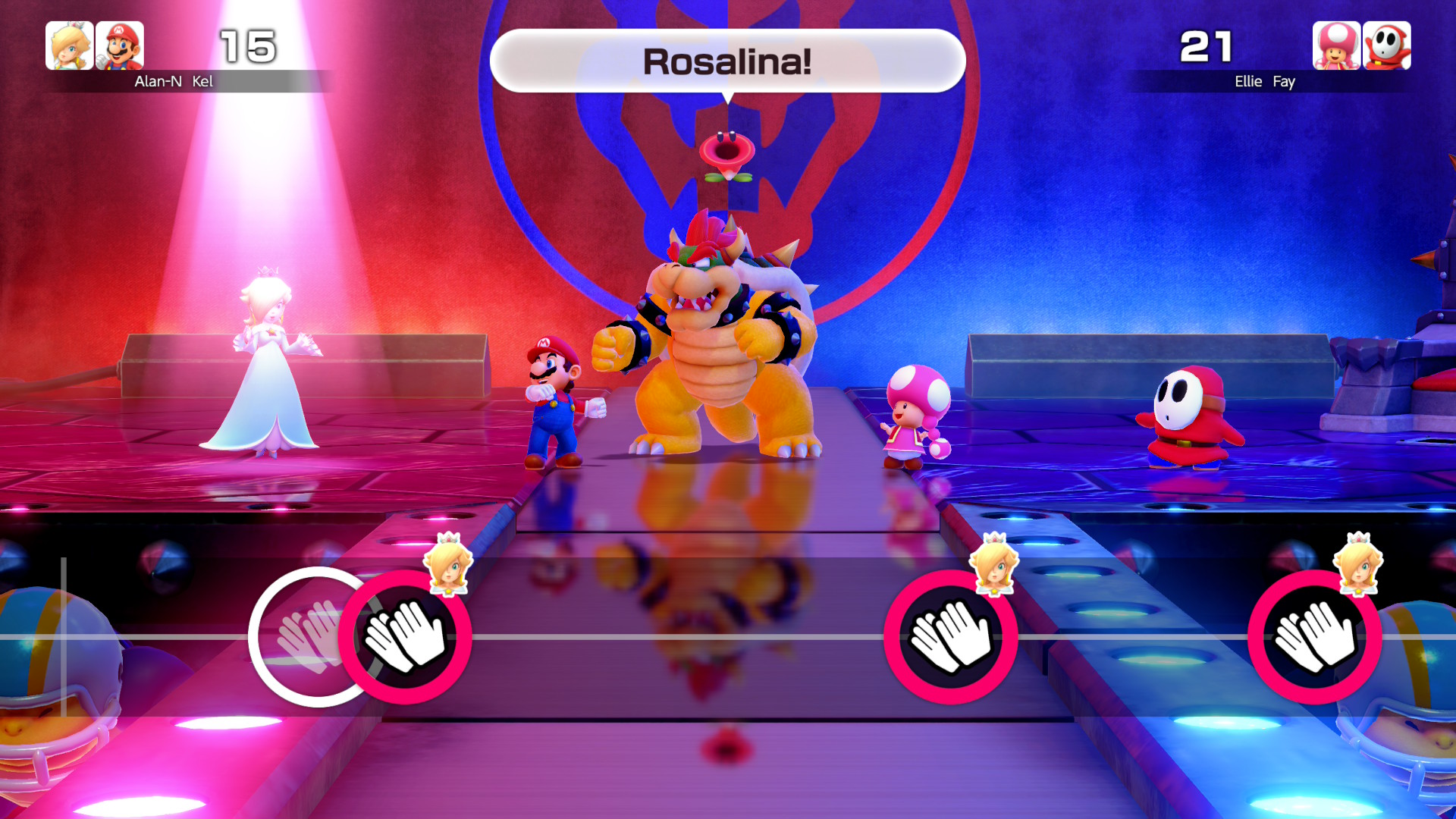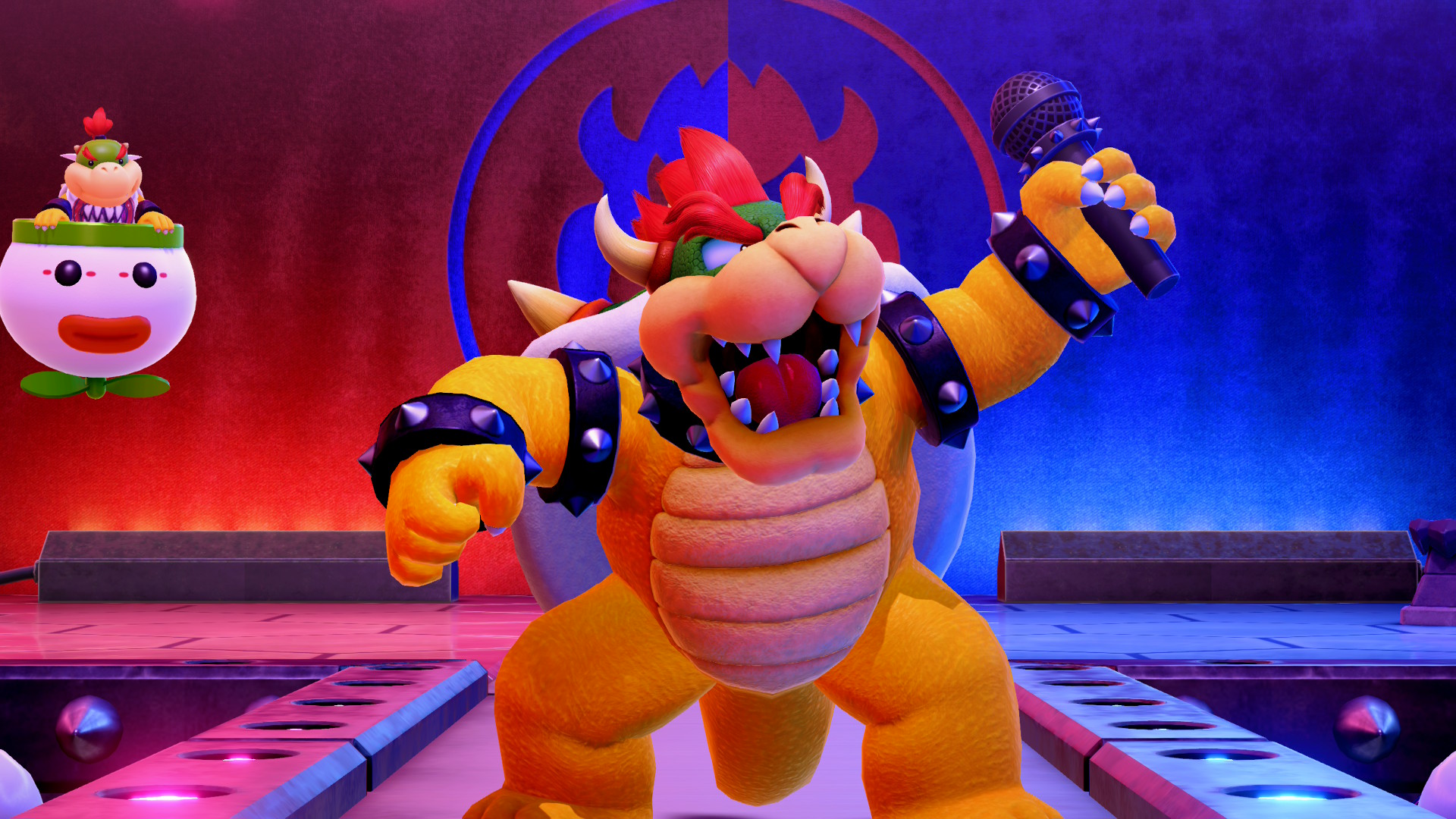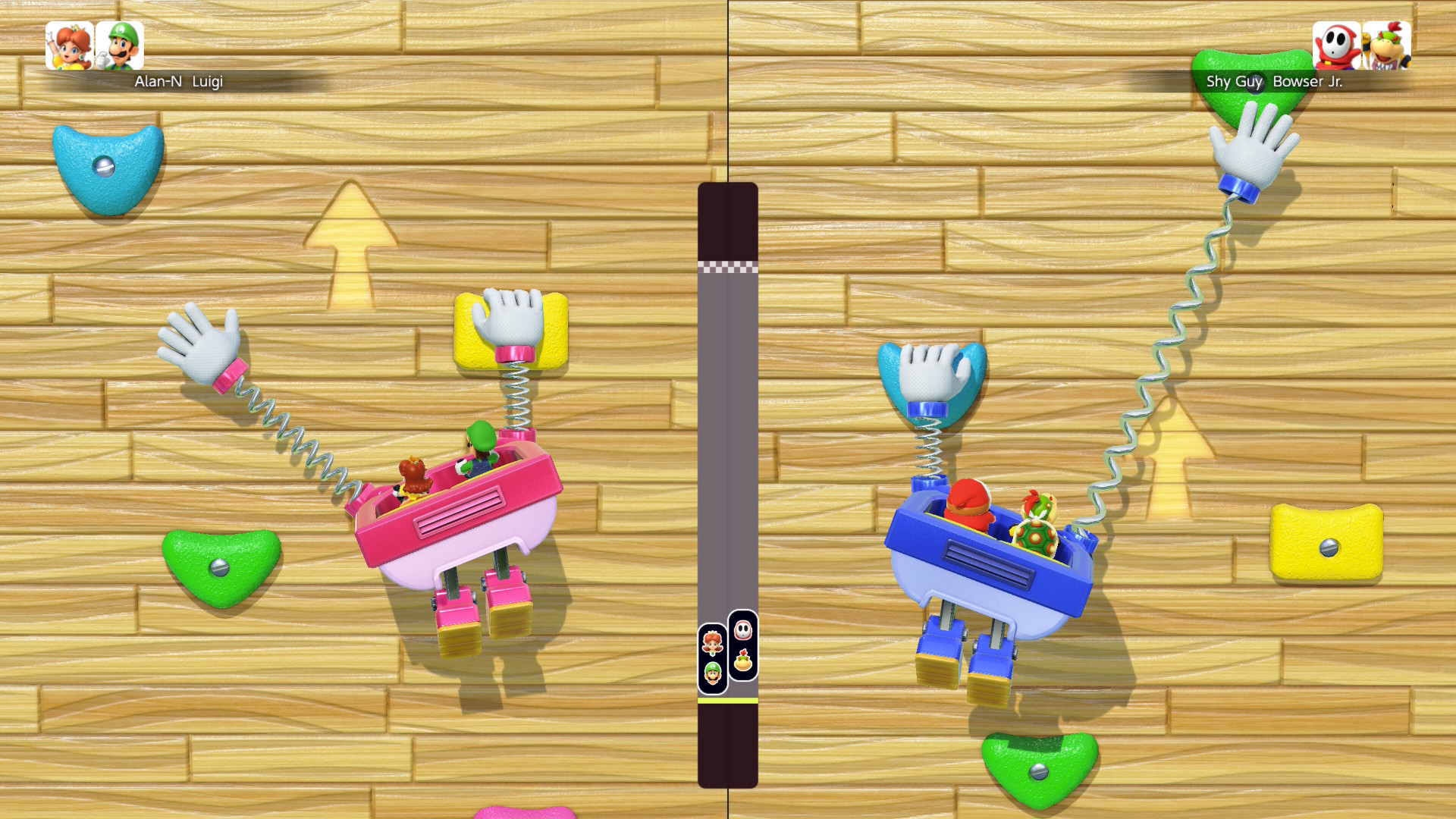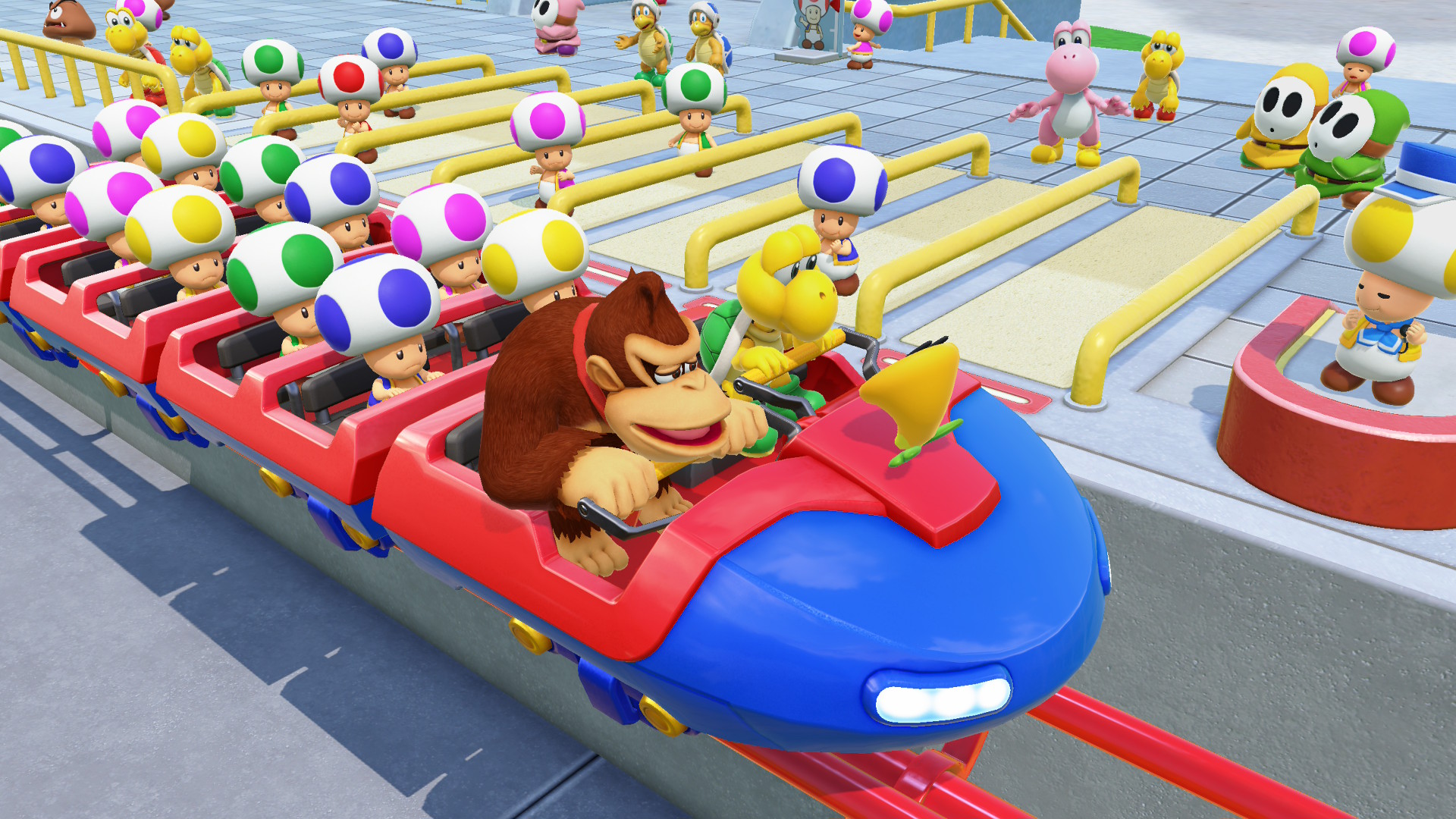TechRadar Verdict
Jamboree TV offers some more and varied uses of the Switch 2's unique features with a charming game show format that will be fun for breaking out at parties. Its new content, however, doesn't integrate with the base game and makes for an awfully pricey package if you don't already own the original game.
Pros
- +
Fun varied use of mouse controls
- +
Putting yourself inside Bowser Live is goofy fun
- +
Condensed board game rules are welcome
Cons
- -
Switch 2 features not integrated into the base game
- -
Camera and microphone are underused
- -
A pricey party game if you didn't own it previously
Why you can trust TechRadar
Platform reviewed: Nintendo Switch 2
Available on: Nintendo Switch 2
Release date: July 24, 2025
To beef up its Nintendo Switch 2 first-party library, Nintendo has been bringing enhanced versions of Nintendo Switch games to its new console, both as standalone releases or with an additional upgrade price. While it started strong with Switch 2 editions of two of the greatest games of all time, Super Mario Party Jamboree is a trickier proposition.
This isn't the same as a remaster like Breath of the Wild or Tears of the Kingdom, which integrated new features into the existing game, but more of an expansion bundled with the base game like Super Mario 3D World + Bowser’s Fury, and at a higher price. Sure, you can play the base game in 4K or on a nicer 1080p display in handheld mode, but you don't really notice a big visual bump, while the Switch 1 version had no performance issues that this Switch 2 Edition has improved.
All the same content, including the single-player Party Planner Trek, the motion-based modes, and the online-based modes, are still there, and if you're upgrading, all your save data and unlocked rewards and content carry over. But you're not going to experience any material differences from the original game I covered in my previous review. For instance, DK hasn't had a Donkey Kong Bananza-style facelift, while Switch 2 functions like the camera doesn't feature either. All the new Switch 2-exclusive content you'll find exclusively in Jamboree TV, so without further ado, let's get to that.
Mouse trap

Jamboree TV revamps the Mario Party model into a game show setting, featuring the annoying talking flower from Super Mario Bros. Wonder, though you can thankfully also mute him. But rather than just picking Mario and pals as contestants, if you have a compatible camera attached to your console, you can also put your own faces on screen as a circle besides your character, though for privacy reasons, you won't be able to capture any screenshots or video when using this feature.
Once your contestants (and/or yourselves) are up on stage, you get to choose between four modes: Mario Party, Carnival Coaster, Bowser Live, and Free Play, the latter where you can play any of the minigames but is presented rather barebones compared to the same option in the base game's Minigame Bay.
Mario Party lets you play the core board game with all seven boards from the base game, but with some new exclusive twists. Aside from the standard party rules, this introduces two new rules.
While Tag-Team lets you play as a 2v2 instead of the usual free-for-all, Frenzy is a welcome option for those strapped for time, condensing a game down to just five turns but throwing in all the perks and high stakes of the last five turns of a normal game, so you start with more coins and a star, more to spend but more to lose. Of course, the option to save the game and continue from where you left off in another session is still possible.
Sign up for breaking news, reviews, opinion, top tech deals, and more.

Bowser as a game show host in Bowser Live is a pretty fun turn for the Mushroom Kingdom's resident baddie, and the Switch 2's camera and microphone functions do a decent job of immersing you in that. It's just a shame it's so short-lived.
While camera play won't make a huge difference on gameplay (although having everyone see your mug when you've had a star snatched from you is going to be more priceless than just selecting an emote) the 14 new mouse-based minigames are a decent addition. They're all creatively varied, not just basic point-and-click or drag-and-drop affairs, but sometimes also incorporate gyro controls, while also requiring team coordination.
But given you've also got 73 other minigames in Mario Party mode, you might only encounter a mouse minigame a handful of times, and there's no way to change a setting for more mouse minigames. You can, however, turn off mouse minigames, which you'll have to if pairing the original Switch Joy-Con as extra controllers, but that annoyingly also turns off motion-based minigames.
It's for that reason that there's the mouse-only Carnival Coaster. In this co-op mode, you ride a rollercoaster-slash-shooting gallery with five different themed routes to choose from, and have to try and get to the end before time runs out. You can gain precious seconds by aiming the mouse to shoot enemies that pop up during the ride, as well as completing randomly selected mouse minigames. These minigames adopt co-op rules rather than battling another team, while you're awarded more bonus time based on how well you do.
Make some noise

If it sounds like the biggest addition to Jamboree TV is mouse controls, you'd be right because the Bowser Live mode feels half-baked, even though it should be a bigger deal. For this game show within a game show, two teams or two battle to win the Koopa king's approval in either camera or microphone-based minigames. The camera is a literally bigger deal because rather than just capturing your heads, it captures each person's whole body so that you're fully transported into the scene and tasked with doing pretty silly things like balancing goombas on your head or hitting coins from a question block as fast as you can.
Meanwhile, microphone minigames takes advantage of the Switch 2 Camera as you use either your voice of handclaps, and it's incredible how well the microphone picks up both even when you're standing or sitting several feet away, so you don't have to yell, even if that's what you're encouraged to do in Bowser Chicken, where you shout to propel a car forward to score points, but not before reaching Bowser at the end. But since the microphone doesn't pick up who's shouting, that allows some underhanded shenanigans like having another team shout just when you thought you stopped your car at just the right spot.
Yet for all the snazzy presentation and wild atmosphere of this mode, Nintendo only thought to include three minigames for each, and they're all incredibly short. So, in a format where you have just two rounds before a final round that's basically determined by which team can make the most noise, the novelty wears off very quickly. It feels like a lack of confidence, perhaps owing to the fact that the camera is also not going to be a peripheral that everyone has. But then it also means it's definitely not worth investing in one if you're expecting to make better use of it in this game.
One other feature that I wasn't able to test pre-launch was GameShare, a cool feature that allows you to share a multiplayer game with other Switch owners even if they don't own the game. However, from the information provided, its support for Super Mario Party Jamboree - Nintendo Switch 2 Edition only works locally and only lets you play a single board, Mega Wiggler's Tree Party, and none of the modes from Jamboree TV. It makes you wonder what even the point is of including the feature when it's so limited, especially when Mario Party boards play perfectly fine on a single console.
Should you play Super Mario Party Jamboree + Jamboree TV?
Play it if...
You want more fun ways to play with your Joy-Con mouse controls
Mouse-based minigames make up the lion's share of the new minigames in Jamboree TV, which are more creatively varied than mere point-and-click that work in co-op as well as versus modes. With Mario and pals, it's also more charming than the mouse minigames in Nintendo Switch 2 Welcome Tour.
Don't play it if...
You don't care for multiplayer games
There's little fun to be had playing a party game solo, especially as Jamboree TV contains no rewards or unlockables like the base game. If you don't already own the Switch 1 version, you're also looking at an eye-watering cost for a casual party game.
Accessibility
While there are no set accessibility settings, Super Mario Party Jamboree Switch 2 Edition + Jamboree TV allows you to adjust the difficulty of CPU, message speed, as well as whether or not to include a tutorial before the start of each minigame. Jamboree TV minigames requiring a camera, motion, or mouse do not have alternate controls, but for microphone minigames, you can also clap your hands instead of using your voice. Content in the base game remains unchanged, so there are no alternate controls to the Motion Island modes.
How I reviewed Super Mario Party Jamboree + Jamboree TV
I played Super Mario Party Jamboree Switch 2 Edition + Jamboree TV for about 8 hours on Nintendo Switch 2, including several local multiplayer sessions, but was unable to test online or GameShare as per Nintendo's pre-launch guidelines.
I previously reviewed Super Mario Party Jamboree on Switch, so I was able to make comparisons between the original version and the Nintendo Switch 2 Edition. As there are no meaningful changes in the base game, my time was primarily spent on Jamboree TV.
I played primarily in docked mode on an LG C2 OLED TV. I mostly played with a single Joy-Con in horizontal and vertical, button, motion and mouse-based configurations, and also used the official Nintendo Switch 2 Camera, except for when capturing screenshots.
Alan Wen is a freelance journalist writing about video games in the form of features, interview, previews, reviews and op-eds. His work has appeared in print including Edge, Official Playstation Magazine, GamesMaster, Games TM, Wireframe, Stuff, and online including Kotaku UK, TechRadar, FANDOM, Rock Paper Shotgun, Digital Spy, The Guardian, and The Telegraph.
You must confirm your public display name before commenting
Please logout and then login again, you will then be prompted to enter your display name.

